Index

Review: The HD 6850 with two power connectors
Our previous review covered Saphire Radeon HD 6850 running at reference clocks, whereas our today’s test subject is Sapphire HD 6850 Toxic. As the name suggests, Toxic cards come with Toxic cooling but Sapphire surprised us by using HD 6870’s PCB for its HD 6850 Toxic. Although Sapphire HD 6850 Toxic looks different than the HD 6870, it is only due to the shroud as the cooler design is identical to the HD 6870’s.
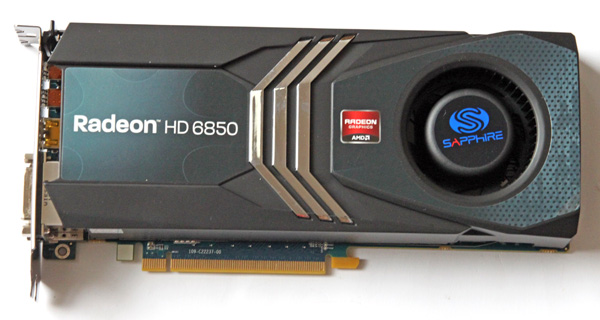
HD 6850's GPU reference clocks are at 775MHz, with memory running at 1000MHz (4000MHz effectively). The HD 6850 Toxic on the other hand runs at 820MHz for the GPU and 1100MHz for the memory (4400Mhz effectively).
The picture below shows Sapphire HD 6850 and Sapphire HD 6850 Toxic cards, and they are visibly different.
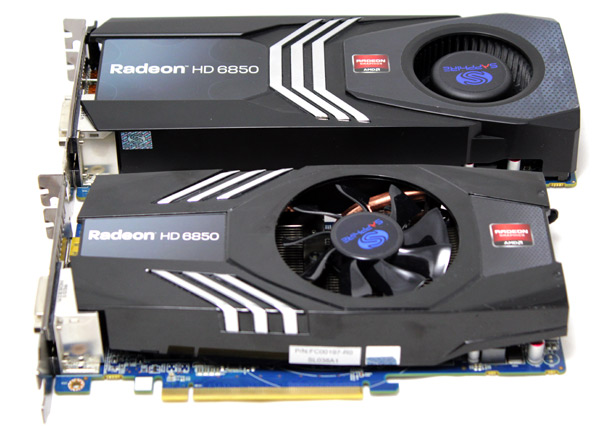
Sapphire HD 6850 runs at reference clocks but Sapphire has made a few changes to their design that separates this card from the other reference AMD designs.
Below you see the GPUZ screenshot, confirming the clocks on our Sapphire HD 6850 Toxic card.
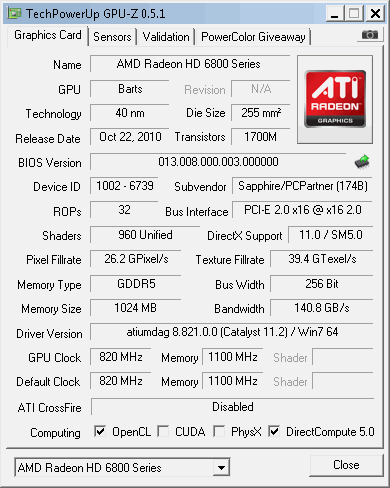
Sapphire HD 6850 card is based on BartsPro core, which compared to the previous generation offers improvements on the field of tessellation, Eyefinity, video decoding and consumption. UVD engine is now in UVD 3 version; there’s also HDMI 1.4a for 3D Blu-ray as well as two DisplayPort 1.2 outs. The DisplayPorts support Multi-Stream technology, allowing up to 6 monitors to be used via only two DisplayPorts.
Sapphire’s HD 6850 Toxic comes factory overclocked – the GPU runs at 820MHz with memory at 1100MHz (4400MHz effectively). As you can see from the picture below, Toxic is longer than Sapphire’s reference HD 6850. Factory overclocked Toxic cards use the HD 6870’s PCB.

Sapphire HD 6850 Toxic measures 9.5 inches in length (24.2cm), which is similar to HD 6870 or HD 5850 cards. Sapphire HD 6850 on the other hand is 8.5 inches in length (21.7cm). We’re talking about wide, dual slot cards that will fit in almost any smaller case.
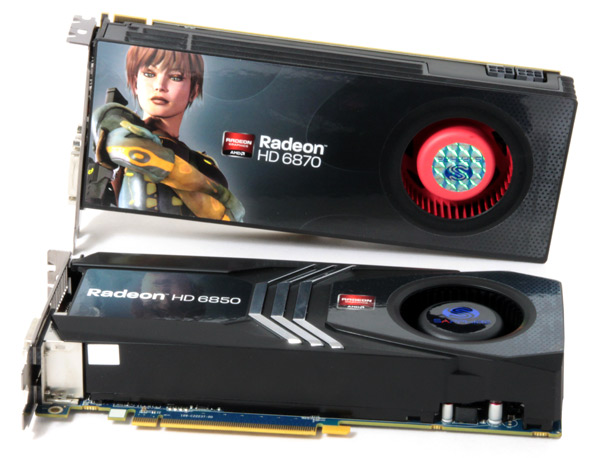
Since HD 6870’s PCB is used, Toxic also uses two 6-pin power connectors, unlike the HD 6850 which has only one. Despite consumption being similar to that of the HD 6850, you’ll have to connect the second 6-pin connector. The reason is that the second connector is for the extra demands caused by the overclock.
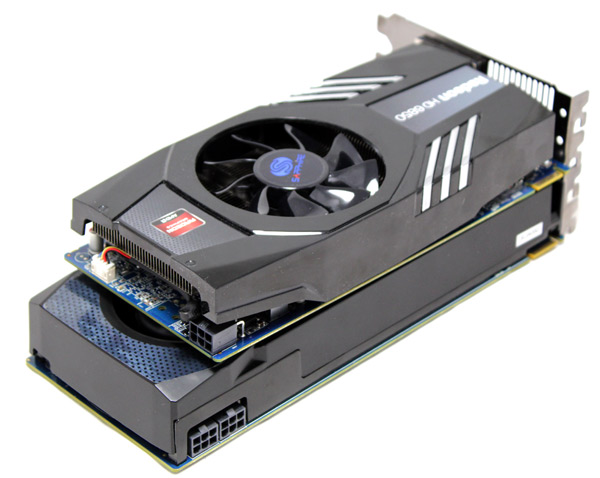
The fan blows most of heated air outside of the computer case through the rear of the video card shroud. Fan speed regulation can be performed via the Catalyst Overdrive or any other tool you may prefer. Sapphire's TriXXX tool will allow for GPU voltage changes. You can download it here, provided you register your card.
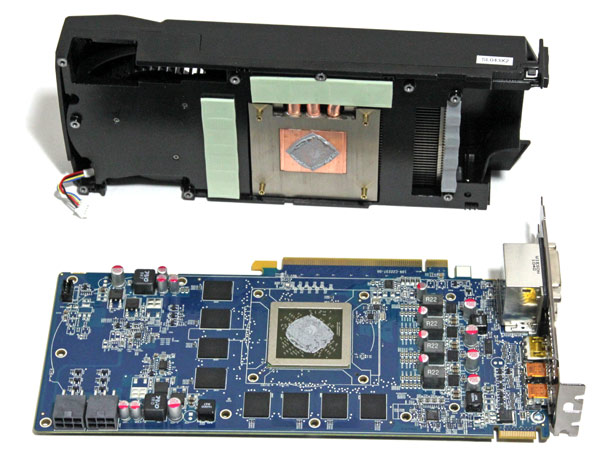
Sapphire HD 6850 Toxic's heatsink uses three heatpipes to draw heat from the GPU core.
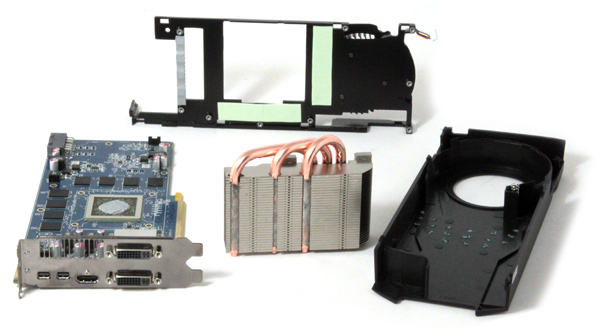
The HD 6850 sports 256-bit memory bus like the HD 5800 series rather than 128-bit on the HD 5770. Sapphire HD 6850 Toxic card is equipped with 1024MB GDDR5 memory. The GDDR5 memory chips are made by Hynix (model number H5GQ1H24AFR-T2C). They are specified to run at 1250 MHz (effective 5000 MHz).
The I/O panel features two DisplayPort 1.2 connectors, one HDMI 1.4a and two DVI connectors (one of them is single-link with maximum resolution of 1920x1200).
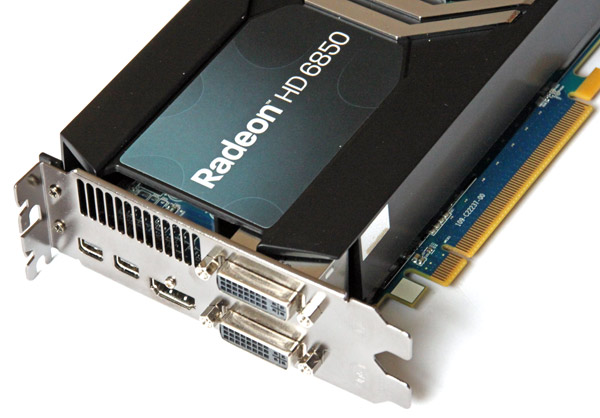
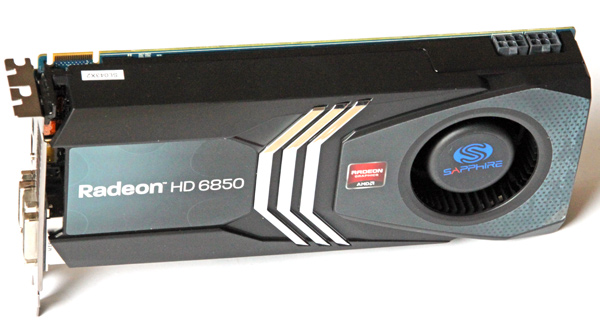
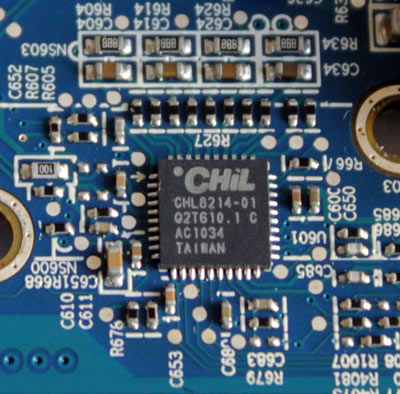
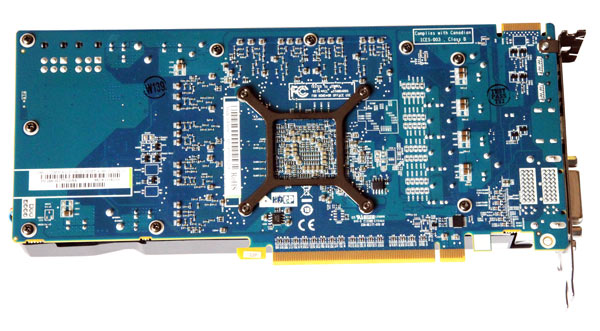
Within the box (made of recycled paper), you’ll find the standard stuff, Crossfire Interconnect Cable, a DVI to VGA Adapter, two four pin to six pin power cables, as well as an HDMI 1.4a cable (1.8m) and a mini-DP to DP Adapter.
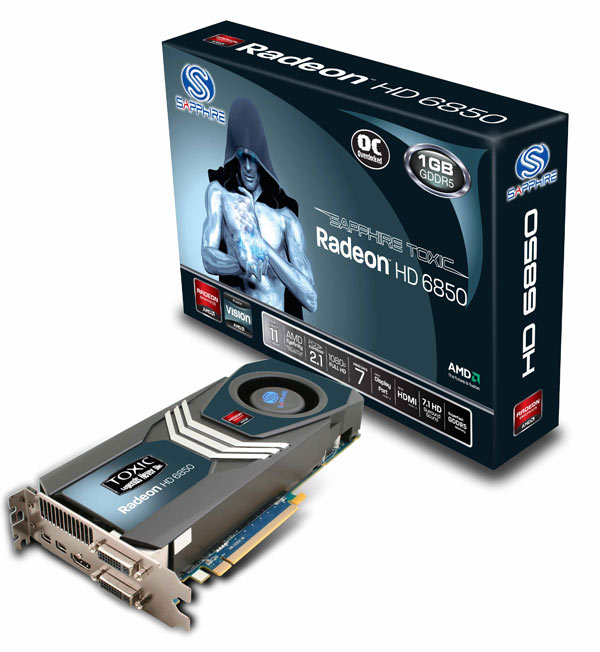
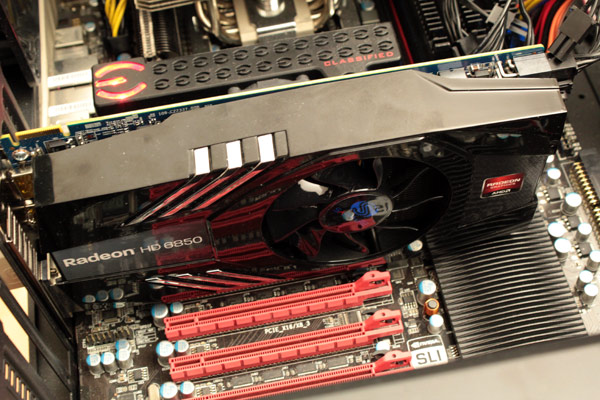
Motherboard: EVGA 4xSLI
CPU: Core i7 965 XE (Intel EIST and Vdrop enabled)
Memory: 6GB Corsair Dominator 12800 7-7-7-24
Harddisk: OCZ Vertex 2 100 GB
Power Supply: CoolerMaster Silent Pro Gold 800W
Case: CoolerMaster HAF X
Fan Controler: Kaze Master Pro 5.25"
Operating System: Win7 64-bit
Nvidia 266.58_desktop_win7_winvista_64bit
AMD 11.2 CCC
3DMark 2011
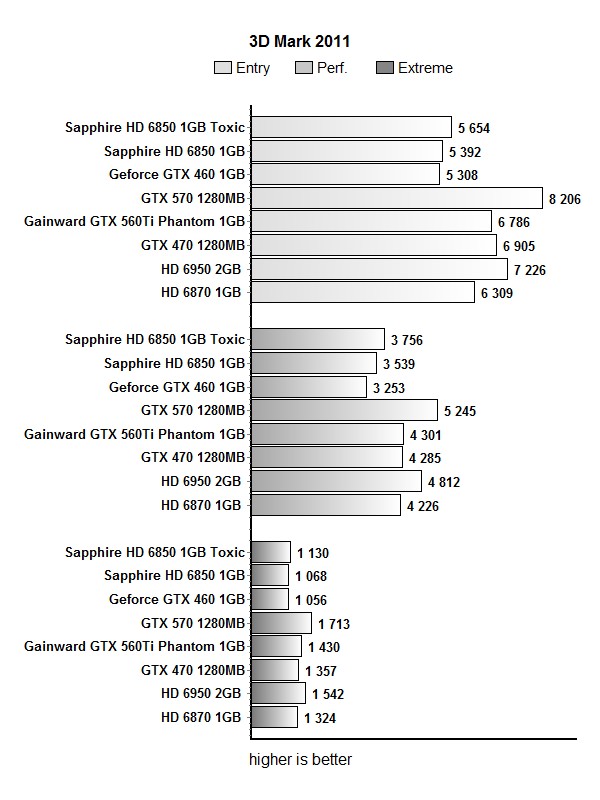
3DMark Vantage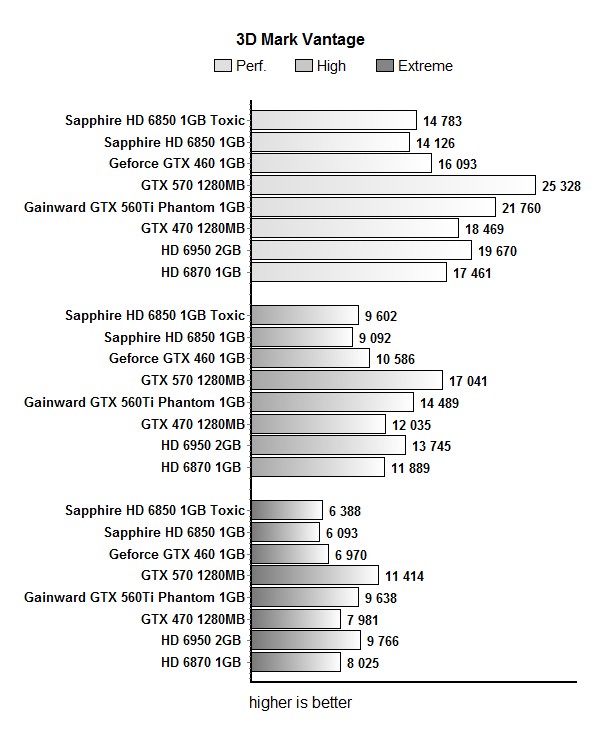
Aliens vs Predator
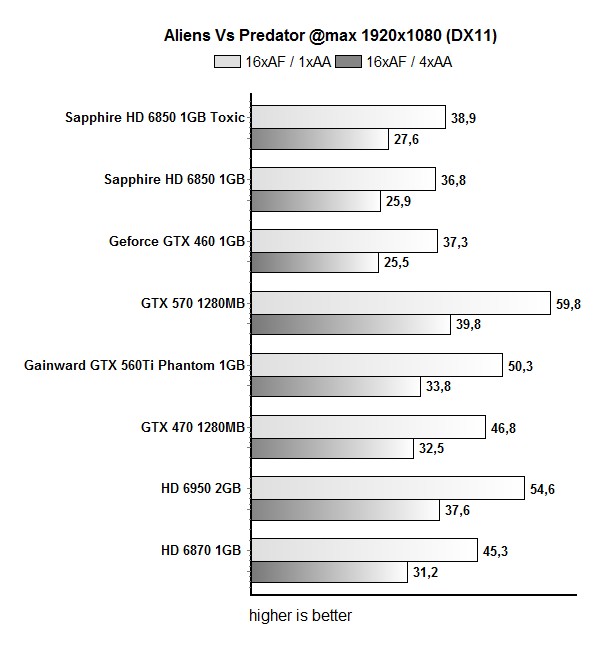

Dirt 2
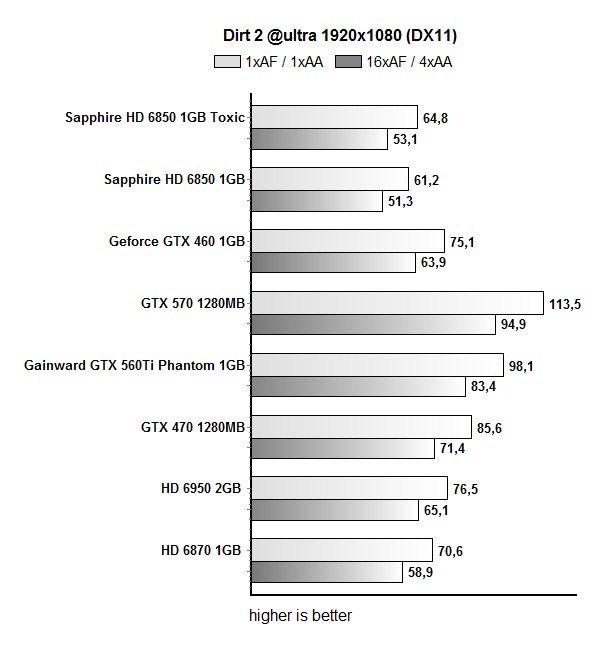

Metro 2033
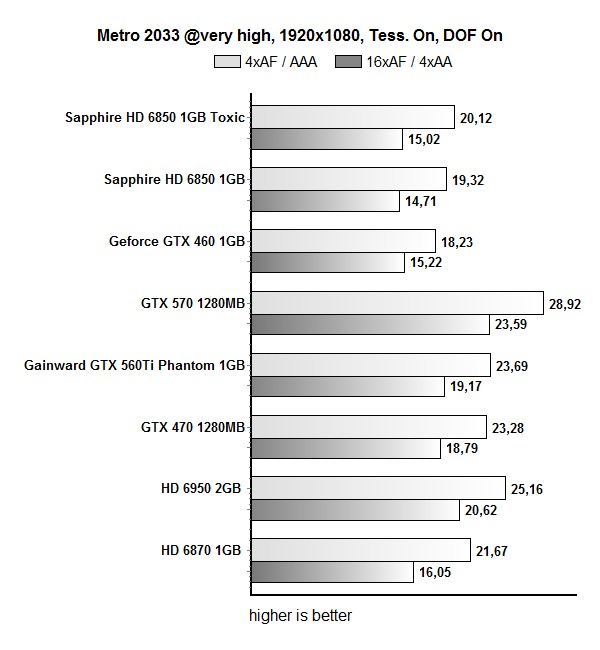
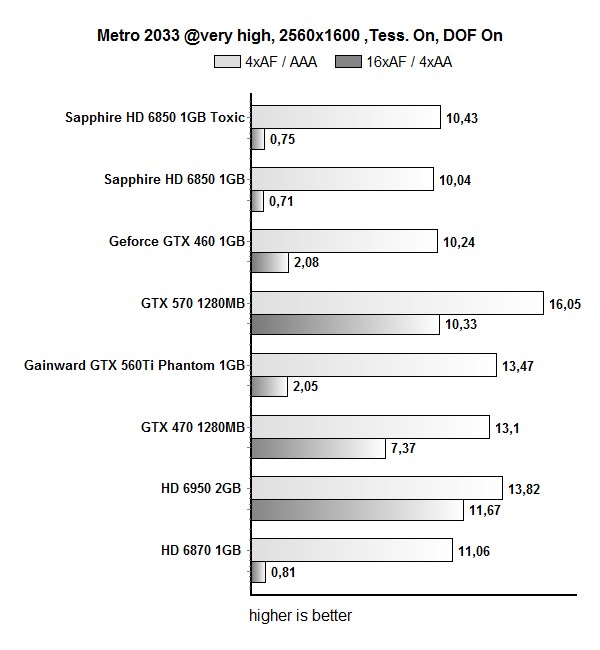
Unigine Heaven

TessMark
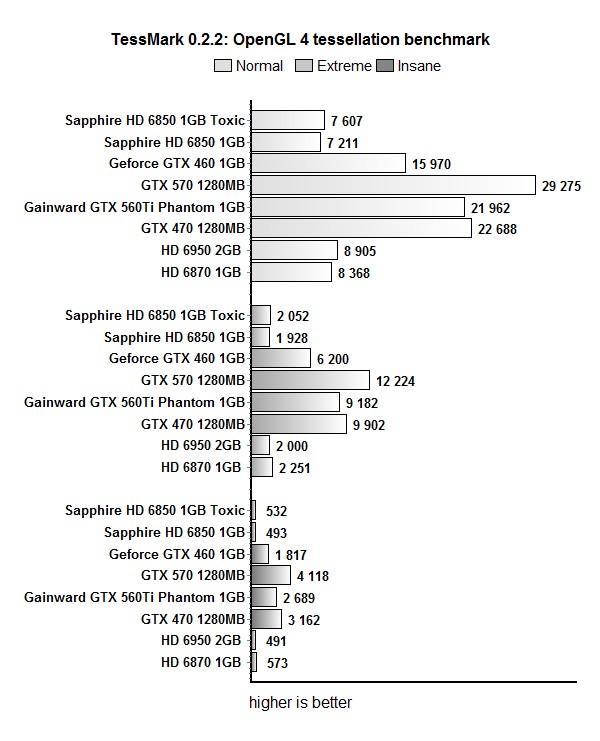
Sapphire HD 6850 Toxic come factory overclocked; the GPU runs at 820MHz and the memory at 1100MHz (4400MHz effectively).
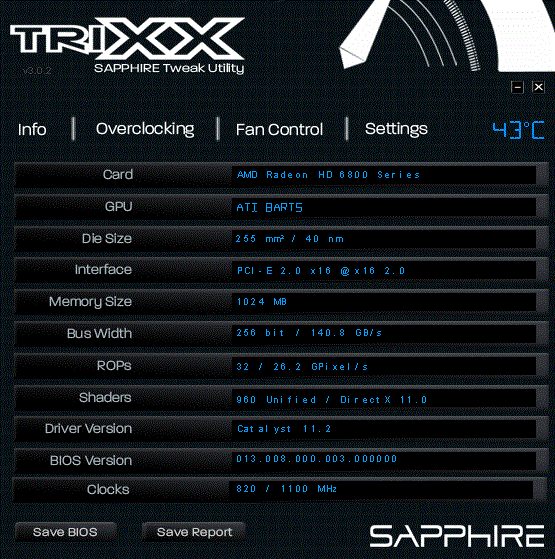
Compared to the reference Sapphire HD 6850, which we tested recently, here, Toxic’s voltage is slightly higher. You can see the results we got in Saphire TriXXX below.

Sapphire HD 6850 Toxic
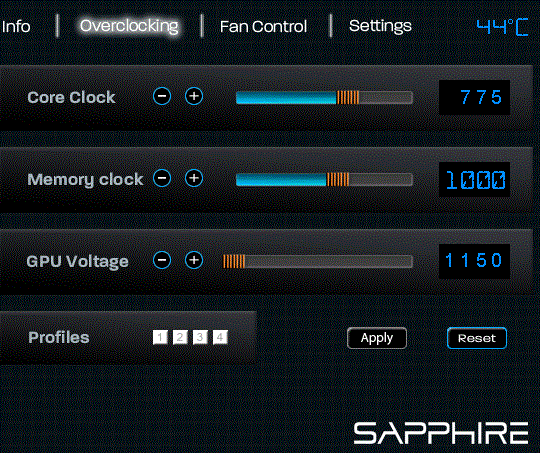
Slika: Sapphire HD 6850
You can see that Toxic’s idle temperatures are lower, which is expected as it has larger cooling. With these things it’s certain – size matters
.

Sapphire HD 6850 Toxic uses HD 6870’s PCB, which is longer than that of standard HD 6850 cards. HD 6850 Toxic requires two 6-pin power connectors, in case the card’s overclock requires more juice.

Intensive operation resulted in HD 6850 Toxic temperatures going up to 77°C. We were happy with the noise levels on the card. Same can be said about reference Sapphire HD 6850, but its lower clocks, lower voltages and specially designed cooling result in significantly lower temperatures than those we measured on the Toxic.
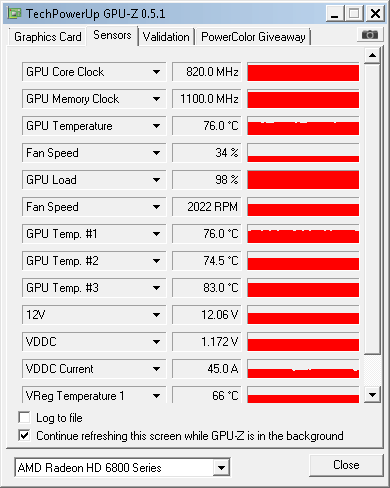
Sapphire HD 6850 Toxic
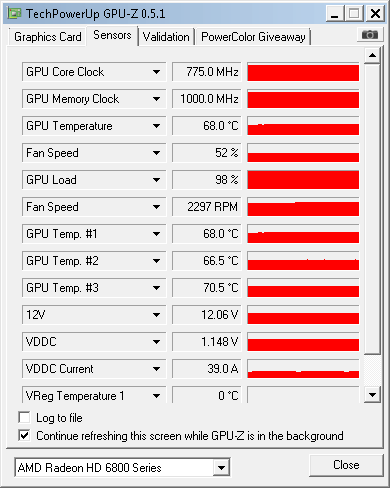
Sapphire HD 6850
Sapphire TriXXX allowed us to push the GPU voltage to 1281mV, which helped in pushing the GPU all the way up to 952MHz. This is the maximum we achieved with fan at AUTO settings, where the fan still was not loud.
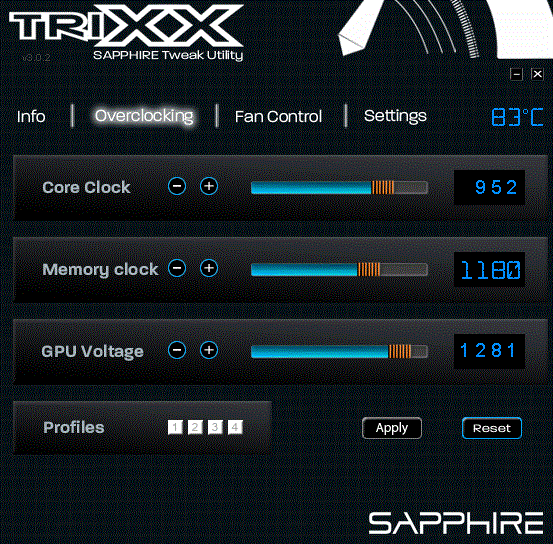
Sapphire HD 6850 Toxic OC with auto fan
If you want to squeeze out the last drop of performance from HD 6850 Toxic, you’ll have to increase the fan RPM as well as GPU voltages. Note that overclocking results may vary from card to card.
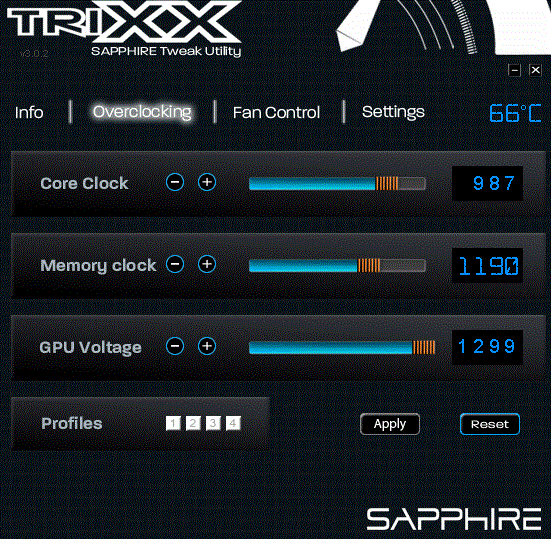
Sapphire HD 6850 Toxic OC with manual fan
It looks like we didn’t strike lucky and get a super-overclocker as our test HD 6850 Toxic didn’t like going beyond 987MHz. We had to increase fan RPM to achieve 987MHz, but the fan was already too loud for us to enjoy our overclock.

Power Consumption
Sapphire's HD 6850 consumes around 15W when idle, which is comparable with the green camp’s GTX 460. During operation, HD 6850's maximum consumption was about 25W less than on the GTX 460 1GB. Sapphire HD 6850 Toxic’s idle consumption is comparable to the rest of the HD 6850 pack, but note that higher clocks mean about 20W higher consumption. Additional overclock to 987MHz increased consumption by about 60W.
Sapphire launched two Barts Pro GPU based graphics cards – Radeon HD 6850 and Radeon HD 6850 Toxic. We’re talking about cards from AMD’s second DX11 generation dubbed Northern Islands. Sapphire HD 6850 Radeon Toxic currently goes for €160, here.
Sapphire HD 6850 Toxic is pretty different from the reference HD 6850. First of all, the card comes factory overclocked – its GPU runs at 820MHz whereas the memory runs at 1100MHz (4400MHz effectively). Just to remind you, reference clocks are 775MHz for the GPU and 1000MHz for memory (4000MHz effectively).
Another important difference is the non-reference cooling. Furthermore, Toxic uses HD 6870’s PCB and is thus HD 6850 Toxic is 2.5cm longer than the reference HD 6850.
Toxic’s cooling is efficient when it comes to cooling the GPU, but it isn’t quieter than Sapphire HD 6850 solution. While both cards remain relatively quiet during operation, they’re not inaudible.
Large cooling, HD 6870’s PCB and two power connectors promised maximum overclocking but we didn’t manage to score 1GHz for the GPU. However, 987MHz was quite fine and it allowed for 22% better gaming results.
Price difference between Sapphire HD 6850 Toxic and Sapphire HD 6850 is less than €10, which buys you higher clocks and better performance. However, if you like to overclock yourself then Sapphire’s reference HD 6850 will do just fine.
As far as performance goes, AMD’s architectural improvements resulted in pretty good DirectX 11 gaming, catching up with the likes of HD 5850 and GTX 460 1GB in some benchmarks. Compared to the previous, HD 5800 generation, HD 6850’s improved tessellation performance will allow for pleasant gaming at 1920x1080.
If you’ve stuck to DirectX9 or DirectX10 hardware so far and you’re looking for a nicely priced graphics card that will allow for playing all the latest titles, then Sapphire HD 6850 and Sapphire HD 6870 are definitely cards you might want to look at.



